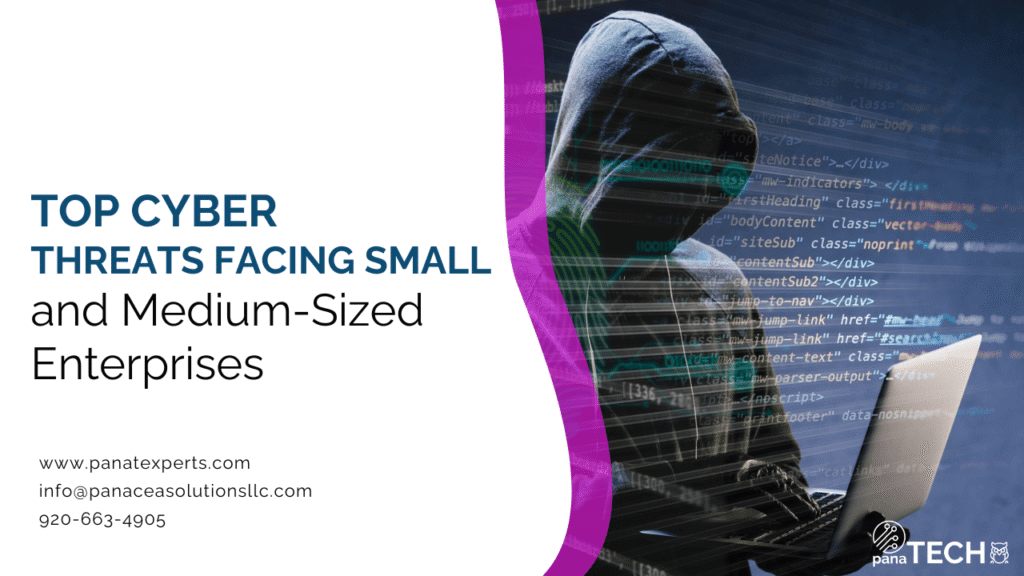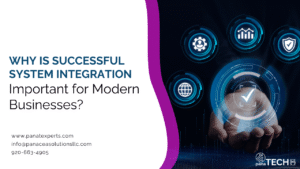Today, most small & medium-sized enterprises (SMEs) face an increasingly complex and dangerous cyber environment. Businesses believe that they are too small to attract attention from cyber criminals, but the data tells a different story. Many SMEs are targeted because they lack robust cyber protections like larger firms.
Read the blog to explore how a cyber attack affects a business, outlining the top threats SMEs should be aware of, and how cybersecurity services provide expert solutions.
How Cyber Attacks Affect SMEs?
Cyber risk for SMEs is not just a TECH issue. It’s a business-continuity, financial, reputational, and strategic risk. According to research, 46% of all cyber breaches impact businesses with fewer than 1,000 employees. Cyber attacks can have a serious, sometimes irreparable, impact on an SME. Some of the main ways are:
Financial loss
Breaches cost money in many ways- from direct theft or fraud, to business interruption, to regulatory fines. For example, in a 2025 estimate, small businesses could expect to pay on average between US$120,000 and US$1.24 million to respond to a data breach.
Operational disruption
When systems go down, data is locked or encrypted, and employees cannot do their jobs, the business grinds to a halt. That downtime in small businesses cost a lot.
Reputation damage
Customers trust businesses with their data. If that trust is broken via a breach, it leads to loss of customers, negative publicity, and long-term harm.
Regulatory/compliance risk
Data breaches may trigger regulatory consequences, especially if sensitive personal data was involved. SMEs may lack in-house experts to manage this.
Business closure risk
Some statistics suggest that a cyber attack can be the end for small businesses. For example: “60% of small businesses that suffer a cyber attack go out of business within six months.”
Intellectual property or data loss
Even if the business survives, losing proprietary data, trade secrets, or customer lists undermine competitive advantage.
Vendor or supply-chain effects
An attack on a small business may ripple into its partners or vendors, or come via their vendors. Smaller firms have weaker protections, creating holes in supply chains.
Common Cyber Threats SMEs Should Consider
Here are seven of the major and damaging threats facing small and medium-sized enterprises.
Phishing & social engineering
Phishing remains one of the top entry vectors. Employees receive seemingly legitimate emails, links, or attachments and inadvertently grant access or reveal credentials. According to one survey, only about 14% of small businesses rated their ability to mitigate cyber risks.
Social engineering (including via phone, text, or chat) targets trust and human error rather than just technical vulnerabilities.
Ransomware attacks
Ransomware encrypts business data or locks systems until a ransom is paid. SMEs are particularly vulnerable because attackers assume smaller firms will pay to avoid downtime. The cost and business interruption can be massive; even paying the ransom doesn’t guarantee recovery.
Malware and malicious software
Malware attack goes beyond ransomware that includes spyware, key-loggers, trojans, and root-kits. These malicious programs may run silently, exfiltrate data, or give attackers persistent access. Among small businesses, malware was reported as the most common type of attack (18%) in one dataset.
Compromised credentials
It is an easiest way for attackers to gain access is via weak or stolen credentials. SMEs have less stringent identity & access management practices.
Supply-chain / vendor vulnerabilities
Smaller businesses are increasingly targeted not directly, but via the organisations they work with, via shared systems, services, or software. A breach in a service provider can cascade into many SMEs. Research indicates that 59% of companies have experienced a data breach resulting from third-party or vendor risk.
Cloud & remote access vulnerabilities
As more SMEs adopt cloud services and remote work, new vulnerabilities are emerging. For example, cloud environment intrusions increased by 75% over the past year in one data set.
Remote access ( like VPNs, RDP, unsecured devices, etc. ) also widens the cyber attack surface for SMBs.
Insider threat & lack of security awareness
Often overlooked: threats from within the organisation. This could be malicious insiders, but more commonly, negligent insiders. For example employees who make mistakes, click the wrong link, or are unaware of security policies. One study found that human error and system failure account for 52% of data security breaches in small businesses.
SMEs frequently report that a lack of skilled staff, budget constraints, and low awareness are major obstacles.
How Cybersecurity Services Can Help?
We have explore the primary cyber threats evolving continuously. Now, let’s examine what role can professional cybersecurity services play for SMEs?
Risk assessment & gap analysis
A cyber security provider evaluates current security posture of your business to identify the most critical assets, & highlight vulnerabilities.
Managed detection and response (MDR)
Instead of leaving monitoring to in-house staff, you outsource IT security services to access 24/7 monitoring, threat detection, and incident response.
Endpoint & network protection
An IT security company regularly updates antivirus, firewalls, intrusion detection systems, and patch management. It protects the infrastructure you already have.
Data backup & recovery planning
Especially important given ransomware risk including backups, disaster recovery plans, and incident response procedures. The solutions mean the difference between recovering & shutting down.
Security awareness training
In most SMBs employees are the weakest link. IT security solutions provider train staff on spotting phishing, secure remote work practices, and password hygiene which significantly reduce risk.
Ongoing Support and Strategy
Cyber threats are evolving rapidly. A trusted cybersecurity solution provider is not a one-time fix but a partner in continuous improvement. They help with updating defenses, responding to new threats, and refining your strategy.
Where to Get the Best Cybersecurity Services?
When selecting a cybersecurity company, you surely want a provider that understands SMEs, offers tailored services, and can scale with your business. That’s where panaTECH Experts provides you specialized solutions.
We recognise that smaller enterprises have different needs and budgets compared with large corporations. That’s why we customize our cybersecurity solutions you, not one-size-fits-all. Here’s why most SMBs in the USA trust our services-
- 24/7 Monitoring
- Scalable and flexible services
- Comprehensive cybersecurity coverage
- Leverage advance technology
- Proven track record in helping SMBs
Conclusion
Small & medium-sized enterprises face a sobering reality- they are attractive targets for cyber criminals because of weaker controls, tighter budgets, and less cyber-maturity. The impact of a cyber attack is not just technical- it’s financial, operational, reputational, and strategic.
The good news is- with the cybersecurity service provider, you don’t have to face this alone. Cybersecurity services exist precisely to help businesses like yours. By partnering with a specialist such as panaTECH Experts, you can assess your risk, deploy the right protections, train your people, manage vendors, respond to incidents, and build a culture of security. Contact us to protect your business and keep growing with confidence.
Frequently Asked Questions — Cybersecurity for Small & Medium Businesses
Short, actionable answers about why SMEs are targeted, common threats, how cybersecurity services help, assessment frequency and cost-effective protections.
Why are small and medium-sized businesses (SMEs) targeted by cybercriminals?
SMEs are often targeted because they typically have fewer security controls, smaller budgets, and limited in-house IT/security expertise. Attackers view them as easier and faster targets for attacks like phishing, ransomware, or credential theft — and often profitable due to weaker defenses.
What are the most common cyber threats affecting SMEs today?
The most common threats include phishing and social engineering, ransomware, malware (spyware, trojans), compromised credentials, supply-chain and third-party vulnerabilities, cloud/remote access weaknesses, and insider errors or negligent employees.
How can cybersecurity services help protect my small business?
Cybersecurity service providers deliver risk assessments, 24/7 monitoring (MDR), endpoint and network protection, secure backups and recovery planning, vendor risk management, and employee security awareness training — all tailored to SME budgets and needs.
How often should a small business conduct a cyber risk assessment?
Perform a full cyber risk assessment at least once a year. Re-assess more frequently after major changes — e.g., new cloud services, large hires, mergers, or after a security incident. Continuous monitoring and periodic vulnerability scans are recommended between assessments.
What is the most cost-effective way for SMEs to improve their cybersecurity?
Cost-effective steps include using managed detection/response (MDR) or managed security services, enforcing multi-factor authentication and strong password policies, regular patching, email filtering, reliable backups, and employee phishing training — these reduce the majority of common risks.






